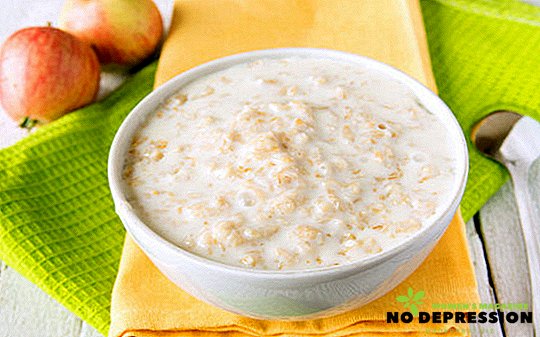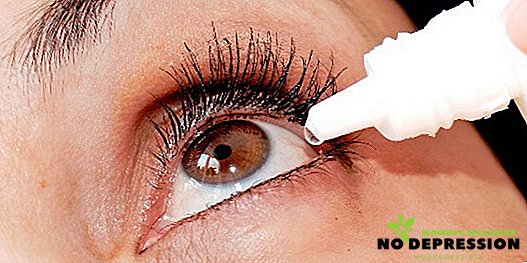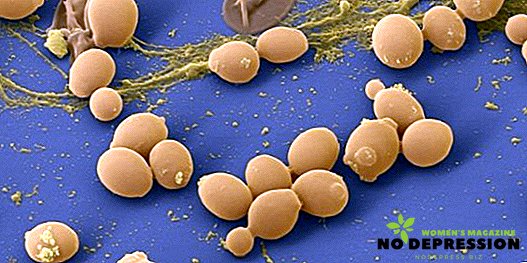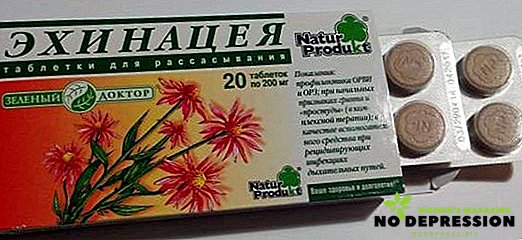Periodontitis is quite a serious disease that can cause surgical intervention. To prevent this, it is important to “consider” all the symptoms in time, which will allow starting treatment at an early stage.
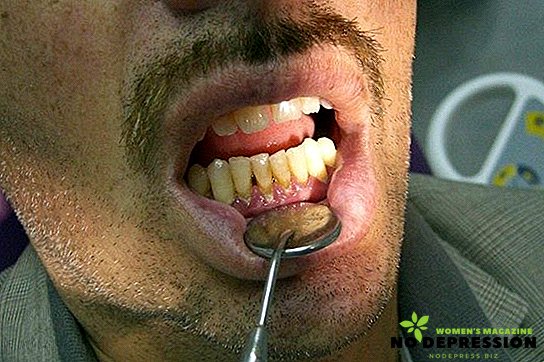
What is periodontitis?
Parodont is a tissue that surrounds the tooth root and securely holds it in the hole. This is a complex of fibers, vessels, channels that provide nourishment and protection of more solid tissues. If there is a source of infection, their inflammation occurs, which is called periodontitis. However, the disease develops gradually. The presence of pathogenic bacteria that collect in plaque and plaque, leads to inflammation of the gums and surface tissues. This problem is called gingivitis.
Symptoms - bleeding and unpleasant sensation in the gums. If the process is not stopped in time, then in the future the bacteria begin to spread more and more, gaps appear between the teeth, periodontal pockets are formed, which opens up the access of infections to the roots of the teeth. It is becoming more and more difficult to calculate such formations, since bacteria multiply with double force. When neglect of this process, in addition to bleeding, pus is often excreted. Parodont more and more behind the roots and teeth begin to loosen.
If you do not treat the disease, it causes the loss of even healthy teeth. Additionally, there may be other problems that will cause a lot of trouble to the person.
If you leave this problem without attention, periodontal disease develops - an infectious disease that affects the alveolar processes and bone tissue.
The main causes of
One of the most common causes is the presence of pathogenic bacteria that contribute to the development of infection. However, dentists identify a number of other factors that may also contribute to the occurrence of periodontitis. These include:
 the presence of running gingivitis;
the presence of running gingivitis;- certain general diseases affecting the immune system, such as diabetes, kidney problems, and so on;
- pathology of bite or teeth;
- hypertonic jaw muscles;
- mechanical damage and injury of the mucous membrane;
- substandard materials used for prosthetics;
- intoxication with certain medications;
- constant stress;
- bad habits;
- untreated tartar;
- hormonal problems;
- gradual depletion of bone tissue, which may occur due to the rejection of solid food;
- low body defenses;
- lack of daily hygiene;
- gastrointestinal tract diseases;
- genetic predisposition;
- neglected dental infections.
Symptoms and complications
Forms of manifestation and signs of this disease depends on the degree of neglect, location, specific species. The most common symptoms are:
- bad breath;
- bleeding gums;
- yellow bloom;
- inflamed mucosal areas;
- the formation of periodontal pockets;
- gaps between teeth and mucous;
- purulent discharge;
- enamel hypersensitivity;
- pain when consuming food;
- violation of the appearance of interdental septa;
- root exposure;
- loss of healthy teeth;
- increased saliva viscosity;
- pulsating sensation in the gums.
The main forms of the disease
Types of periodontitis vary in severity, tenderness and severity of symptoms. In each case, the doctor needs to determine the form and extent of the disease, since treatment depends on it. By the way the pathology proceeds, emit:
- An acute form in which the rapidity of infection of tissues can in a short time lead to serious manifestations. In just 2 months, bleeding, pain, and early manifestations of abscesses may occur. This is a very aggressive form of the disease, which can not be ignored.
- Chronic, in which the symptoms are dim and the disease is sluggish. In this case, the pathology can not cause great suffering to the person, but at the same time, the tissue damage does occur.
With a progressive form of periodontitis, the patient is most interested in receiving medical care to alleviate the condition. In the chronic phase, pathology is easy to start, which, in turn, can lead to more serious pathologies, which are extremely difficult to cure.
If we talk about the location of the infection, we should distinguish between:
- Localized periodontitis. Most often it occurs when mechanical damage to any area of soft tissue. The treatment in this case is simple and easy.
- Generalized periodontitis. Widely distributed throughout the periodontal site. In most cases, this variant of the disease is characteristic of a bacterial infection and is found with low immunity, when the human body cannot cope with the active growth of bacteria.

Periodontitis can lead to various lesions, and the longer they are ignored, the more difficult the symptoms and treatment of the pathology will be. There are the following degrees:
- Easy, in which the pathology does not take a serious form. The patient usually pays attention only to bleeding gums and a not very pleasant sensation when brushing your teeth. At the initial stage, periodontal pockets with a size of up to 3 mm are expected.
- The average severity of the disease, which is characterized by wide gaps in the pockets, reaching 6 mm, the destruction of the root cover, besides bleeding gums, teeth may begin to loosen. On examination, doctors note the presence of stroma sclerosis and tissue granulation.
- Severe disease, manifested by rapid changes in the interdental septa, the destruction of root tissue. Periodontal pockets become the most voluminous, larger than 6 mm. Residues of food penetrating into them quickly become the cause of purulent processes, and the teeth may begin to fall out. It should be noted that even complex treatment may not help to achieve the recovery of damaged tissues by 100%.
How is the diagnosis?
At the first signs of gum disease, you should consult your dentist. For detailed clarification, differential diagnosis is assigned, which will help distinguish one pathology from another.
The doctor collects the patient’s history and complaints, examines the oral cavity, establishes the periodontal index and the bleeding index, performs reopardodography, directs the patient to an X-ray diagnostic and complete blood and urine analysis. These techniques help to accurately diagnose, on the basis of which the doctor prescribes an effective treatment.
How is periodontitis treated?
According to dentists, even the severe form of the disease can be cured. The only negative is that it will be very difficult to restore the integrity of already destroyed tissues. Because it is so important not to bring the case to periodontitis, as quickly as possible to eliminate any inflammation in the early stages. To eliminate all symptoms and the source of infection are used: medications, surgery, orthopedic correction, physiotherapy and hardware treatment methods.
In addition, cleaning and rehabilitation procedures are carried out in the oral cavity. In order for all these therapies to work much faster and more efficiently, they need to be combined. Moreover, both the professional actions of the doctor and the efforts of the patient are important.
When treating with medications, antibiotics are used to kill the infection and disinfect the tissues. The doctor may prescribe antibiotics of different types: both local injections and tablets, which are used orally.
However, according to some dentists, injections of such drugs have a negative effect on the structure of tissues. Among the most well-known drugs distinguish Lincomycin and Ceftriaxone. To strengthen the immunity and enhance the body's defenses, the patient is prescribed mineral multivitamin complexes, a corrective diet, and special medications, for example, Imudon.

With local treatment of periodontitis, applications, rinses, ointments and gels are very popular. The most effective for rinsing are local antiseptics such as Chlorhexidine, Maraslavin. They disinfect the surface of the teeth and gums, wash out bacteria from periodontal pockets. Among the gels and ointments, Traumel, Levomekol, Metrogil-dent showed themselves. With their help, you can reduce pain, reduce inflammation of the tissues, and normalize the microflora of the oral cavity.

If the cause of the disease was the absence of teeth or a violation of the bite, there can not do without the help of an orthodontist. In this case, you must install braces or hold prosthetics. Physiotherapy methods such as ultrasound waves, balneotherapy, phototherapy, electrophoresis, gum massage are also extremely effective.
The peculiarity of such procedures is that they can not be carried out independently. The most radical method of treatment is surgical intervention, and the more periodontal pockets are infected, the more significant these manipulations will be.
Among the methods used are:
- Bone grafting, if it was destroyed more than half.
- Teeth splinting It can be made in different ways: using horizontal or fiberglass tape, using the installation of twin crowns or byugel prosthetics. The purpose of this method is to keep dental units in the wells.
- Gingivoplasty. This method involves cleaning open pockets, treating them with antiseptics and coating special roots of dental roots. At the last stage, epithelium renewal and bone tissue transplantation can be performed.
- Gingivectomy. This operation is prescribed for minor damage and the opening of periodontal pockets. Doctors clean them, remove the inflamed areas by an incision, then treat with a special antiseptic. This is ideal for a localized form of the disease.
Practically painless modern method is a hardware method for the treatment of periodontitis. And although its cost can be much higher, in some cases it is almost the only way to restore soft tissue. The most popular among hardware methods is ultrasound. With it, the doctor can clean the periodontal pockets and eliminate the stone. The depth of exposure to ultrasound is large. The disadvantages of this method include the chaotic beating of waves, which can lead to the destruction of healthy tissue.
 the improved version is the Vector apparatus. It also uses ultrasound, but its action is carried out purposefully. In addition to the destruction of plaque, stones, purification from bacteria, you can flush out the endotoxins and heal the gums, for this purpose, the substance hydroxyapatite is used. The procedure is almost painless and lasts from half an hour to 2 hours.
the improved version is the Vector apparatus. It also uses ultrasound, but its action is carried out purposefully. In addition to the destruction of plaque, stones, purification from bacteria, you can flush out the endotoxins and heal the gums, for this purpose, the substance hydroxyapatite is used. The procedure is almost painless and lasts from half an hour to 2 hours.
One of the most successful options is the use of a laser. It will help to quickly eliminate bacteria, very precisely cut off the affected areas and facilitate the rehabilitation period. Laser treatment does not cause pain, does not require anesthesia, and reduces the risk of inflammation.
Can I use folk remedies?
In addition to the above-mentioned medical manipulations, you can practice some means of traditional medicine on your own at home:
- Take in equal proportions of oil of fir and sea buckthorn, soak them in a small piece of gauze and massage their gums for 10 minutes. By manipulating twice a day, you can significantly reduce the inflammatory process and eliminate tissue infection.
- Take in equal proportions the flowers of calendula and linden, fill them with boiling water. One tablespoon of raw material needs a glass of water. This tool insist at least half an hour, then filtered and rinsed up to 4 times a day.
- Oak bark has proved itself well. Crush one teaspoon of raw materials, pour 200 ml of boiling water and cook over low heat. Leave the broth to infuse for 30 minutes, strain, rinse the mouth need every 2 hours.
- Take one tablespoon of dry comfrey roots, pour 200 ml of water, bring to a boil over low heat. Leave to infuse for 30 minutes, strain, use as a rinse for gums.
It is important to remember that any means of traditional medicine should be used only after consulting a doctor.
Preventive actions
In order to prevent such problems, it is better to carry out prevention of the disease. Dentists advise:
- brush your teeth every day with circular motions for at least 5 minutes;
- time to treat any diseases in the oral cavity;
- eliminate the primary symptoms;
- avoid stress;
- eat well and strengthen the immune system;
- not to forget about the importance of solid products that stimulate metabolic processes and naturally clean the surface from plaque;
- do not start a general disease;
- with the loss of even one tooth to install a prosthesis;
- visit the dentist once every 6 months for examination;
- lead a healthy lifestyle and give up bad habits;
- try not to damage the gums with sharp objects;
- If you find the wrong taste, it is better to correct it immediately in childhood.
In addition to these general recommendations, you can periodically massage the gums in addition, for which you need to make light movements on both sides with clean fingers. This simple procedure lasts no more than 50 minutes, but as a result, normally occurring metabolic processes in periodontal tissues help to counteract the reproduction of bacteria entering the oral cavity.


 the presence of running gingivitis;
the presence of running gingivitis;